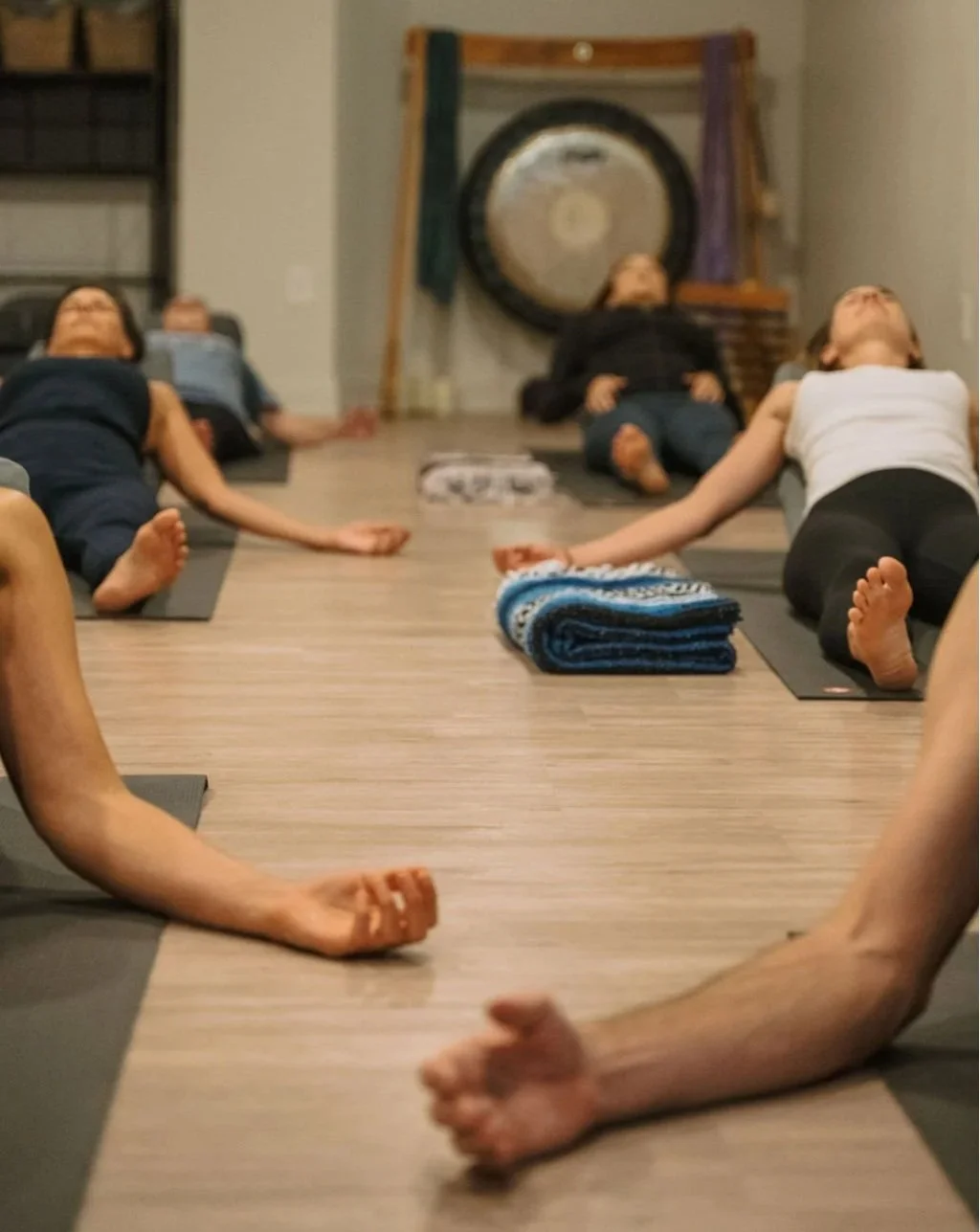Restorative Yoga: The Art of Doing Less (and Feeling Better)
So, life can be a lot. Between the constant notifications, to-do lists, and the general hustle of adulting, our bodies and minds often crave a moment of stillness. That’s where Restorative yoga comes in. It’s a deeply relaxing, nourishing practice that’s less about stretching and sweating, and more about slowing down and tuning in.
If you're looking for a way to calm your nervous system, improve your sleep, and actually feel rested, Restorative yoga might be exactly what you need.
Let’s explore!
What is Restorative Yoga?
Restorative yoga is a gentle, floor-based practice that uses props like bolsters, blankets, and blocks to fully support the body in restful, long-held poses. Unlike more active styles of yoga that focus on building heat or flexibility, restorative yoga invites you to let go - of effort, of tension, of the need to “do” anything at all.
Each pose is held for 5 to 20 minutes, allowing the body to drop into a deep state of relaxation. The goal isn’t to stretch, strengthen, or sweat. The goal is to rest. Real, intentional, nervous-system-soothing rest.
Why Practice Restorative Yoga?
In a world that glorifies being busy, Restorative yoga is a radical act of self-care. It teaches us that doing less doesn’t mean doing nothing. It means doing what matters.
Here are some of the powerful benefits of Restorative yoga:
1. Regulates the Nervous System
Restorative yoga activates the parasympathetic nervous system - the "rest and digest" side of our autonomic nervous system. When we’re constantly stressed and rushing through life, our bodies don’t have a chance to truly heal and recover. Restorative yoga helps shift us out of stress mode and into a state of calm and repair.
2. Improves Sleep Quality
Many students find that practicing Restorative yoga before bed, helps them sleep better. The deep relaxation it fosters can help quiet the mind, reduce anxiety, and prepare the body for a more restful night.
3. Supports Emotional Healing
Because you’re holding poses for longer periods, you might notice emotions bubbling to the surface. This isn’t unusual. Our bodies store tension and trauma (we hold our issues in our tissues), and Restorative yoga creates a safe container to release and process these emotions.
4. Boosts Immune Function
Chronic stress suppresses our immune system. By encouraging deep rest, Restorative yoga supports the body’s natural healing processes, which can enhance immune resilience over time.
5. Accessible to Everyone
Whether you're recovering from illness, managing chronic pain, or just feeling overwhelmed, restorative yoga meets you exactly where you are. There’s no “perfect pose” or end goal. Just a chance to be with yourself, supported and safe.
Isn’t Restorative Yoga The Same As Yin Yoga?
It’s easy to confuse Restorative yoga with Yin yoga, since both are slow-paced, floor-based, and use props. But they’re quite different in intention and effect.
Restorative Yoga is about rest, support, and relaxation. The body is fully supported, and there's no sensation of stretch or discomfort. It’s meant to be so gentle that your body can almost fall asleep in the pose.
Yin Yoga, on the other hand, involves stretching the deep connective tissues and usually includes some level of intensity. In Yin, you’re meant to feel a deep (but not painful) stretch. You stay at your edge of tension, rather than soften into comfort.
They’re both valuable practices, but if your main goal is nervous system regulation and deep rest, Restorative is the way to go.
The Magic Of Props (And Why They're Non-Negotiable)
If you’ve ever looked at a Restorative yoga setup and thought, “Do I really need all these props?”, the answer is a resounding yes.
Props are what make Restorative yoga restorative. They allow you to completely relax into each posture without needing to hold yourself up or engage your muscles. When your body feels supported, your mind starts to unwind, and your nervous system gets the signal that it’s safe to relax.
Here are the essentials, but don’t worry if you don’t have these at home. You can DIY all of your yoga props. The key is comfort.
Bolsters – Like firm body pillows, they support the spine, legs, or chest depending on the pose. DIY: A tightly rolled or folded blanket.
Blankets – Use them for cushioning, warmth, or to gently support the head and neck. I recommend having at least two. DIY: Throw blankets.
Blocks – They help elevate certain parts of the body to find just the right level of support. DIY: Thick books wrapped in a towel or pillowcase.
Eye pillows – Great for blocking out light and adding a calming pressure to the eyes. DIY: A sleep mask or scarf.
Straps – Used occasionally to hold your limbs in place or reduce muscular effort. DIY: A soft belt or scarf.
What To Expect In A Restorative Yoga Class
A typical Restorative yoga class will consist of 4 to 6 poses over the course of 60 to 90 minutes. You’ll spend s few moments setting up each pose with props, and once you’re settled, you’ll stay there… and just be.
There may be guided breathing, meditation, or silence. The teacher might offer gentle hands-on adjustments (if in-person), or simply cue you to soften, release, and surrender.
It’s not uncommon to drift in and out of sleep during practice. That’s not only okay, it’s welcomed.
Permission To Rest
Restorative yoga isn’t about being flexible or mastering poses. It’s about giving yourself permission to slow down, to breathe, and to listen to your body in a world that constantly demands more.
So if you’ve been feeling tired, overwhelmed, or disconnected from your body, definitely drop into a Restorative Yoga class. It might be exactly what you didn’t know you needed.

